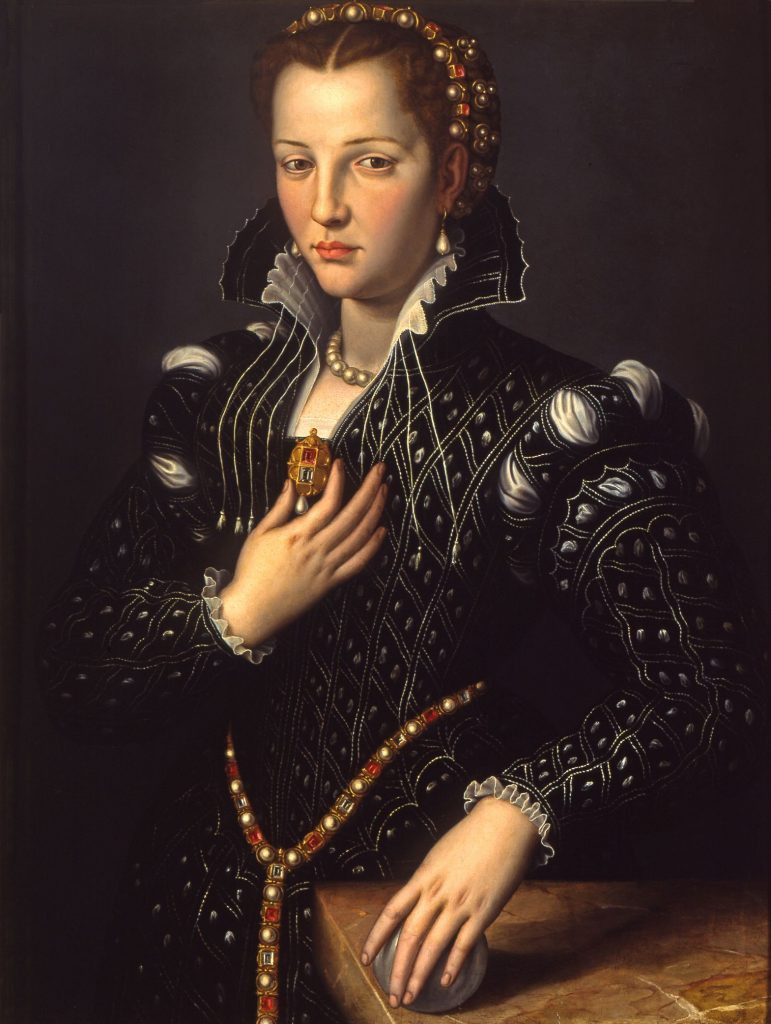Pomander
09.14.2018The pomander has always been a little ambiguous. Not only does it have several words to describe it but over the period of ten centuries it has been a container as precious as its contents, initially magical then for wellbeing and finally for pleasure… But one thing for sure, the pomander has always given off a strong fragrance!
The pomander, or apple of amber or pomandre, or apple of scent was initially the word used to describe a piece of ambergris (the rare and much sought after substance produced by the digestion system of sperm whales) concealed inside a small round receptacle made from precious metal. This amber could be kneaded into a paste with other ingredients. This ornamental accessory was worn as a necklace, bracelet or attached to a belt (depending on its size) and wasn’t so much a decorative object but worn to protect the wearer.
Ambergris was believed to have great qualities, both as an apotropaic (protecting the owner by diverting bad luck away) and an aphrodisiac, so not insignificant. Amber aside, this apple of scent (pomander) could also be fragranced with civet or musk and other substances from animals that were deemed to have fortifying, protective and magical properties.
This very expensive and highly valued jewellery was the present of choice, especially during the Crusades when knights exposed themselves to risks so great that a crucifix alone could not protect them from harm. Pomanders were therefore items for kings, princes, knights and wealthy dignitaries, in short people whose function was to protect the lowly as well as themselves. These portable balls made from open worked metal with delicate clasps were subject to countless refinements and gem encrustation during the Renaissance, to the extent that they acquired the word pomander despite the things that were placed inside. Some had several compartments for the insertion of other fragrances including cloves, nutmeg and myrrh. They came in different shapes such as skulls, fruit, flowers and animals. As the years went by their libertine properties took precedence over those of protection. Then they became less popular and went out of fashion in the 18th century.
But in the shade of ambergris, musk and civet another apple of amber popped up during the Renaissance that has continued to be the pomander we know today, that is to say a citrus fruit, often an orange, studded with cloves and embellished with spices. The great nautical era of Great Discoveries of the fifteenth and sixteenth centuries was mainly spurred by the quest for a sea route to the Indian islands, the source of spices, which were sold as seeds and only came to Europe via the intermediary of Arab traders and then Serenissima, the Republic of Venice. Cloves and nutmeg, like citrus fruit, were highly prized, very expensive and much savoured. This exotic, plant based pomander was not the pomander of the poor but a namesake prized for its rarity during a new era. It fragranced a room and sanitised it against disease. At that time, perfume was used to cover up nasty whiffs.
This pomander of wellbeing is now one of pleasure. In the Sixties, the diptyque boutique sold homemade Culpeper pomanders made with dried oranges studded with Indonesian cloves. It was the only place in Paris where you could buy these. L’Eau, diptyque’s first perfume launched in 1968, was born from the thought of turning a 16th century English pomander recipe containing cinnamon, rose, cloves, geranium and sandalwood into a perfume. The pomander sold today in a box is the re-emergence of an age-old story…


